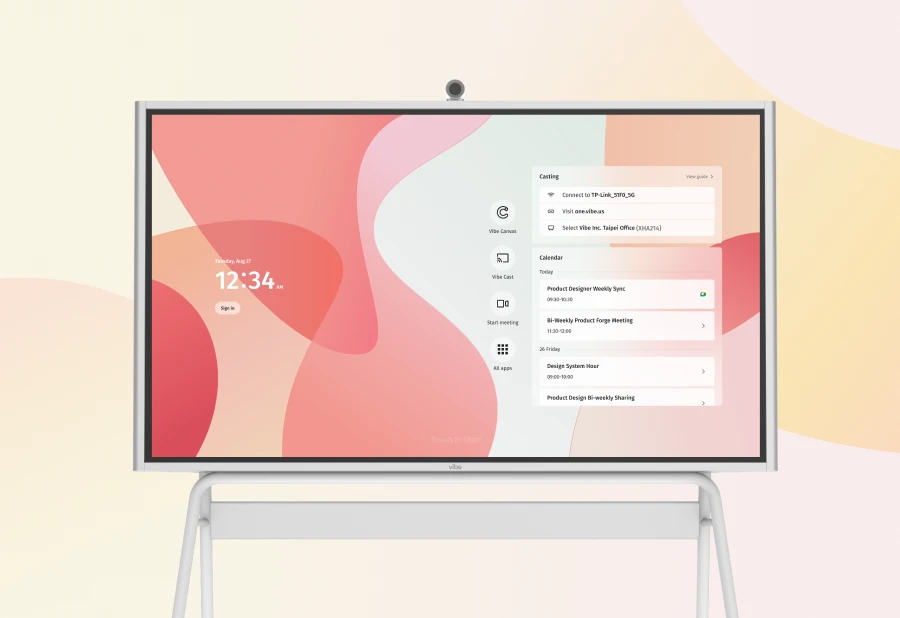Many of us switched to remote work in 2020. And as a result, 2021 is the year more of us fully embrace a more flexible, hybrid work style. The key to a successful hybrid system lies in implementing new hybrid communication strategies to balance the in-person and remote workflows in an efficient manner.
Read on to learn the benefits of creating this strategy for your business, as well as guidance on getting started.
The importance of defining hybrid communication strategies
Hybrid communication strategies helps to ensure that the most important information is distributed to the necessary people through internal and external communication. These strategies help increase efficiency while ensuring that all employees in your organization are on the same page.
Distributes information effectively
Critical information should get distributed evenly throughout the company without leaving anything out. Without complete information, employees may have difficulty successfully carrying out their duties.
Creates a communication standard
By implementing a hybrid communication strategy in the workplace, you give employees a standardized plan to refer to when interacting with clients, colleagues, and managers. These communication strategies ensure that everyone involved in a project has the information they need to communicate clearly and maintain consistency throughout the workplace, preventing any ambiguity.
Motivates and improves morale
Uneven dispersal of key information and ineffective communication makes employees feel left out, especially when their direct managers fail to communicate that information. A strong hybrid communication strategy ensures that information is shared regularly and equally across your organization. This creates a sense of transparency and increases employee trust in the company.
Create an effective hybrid communication strategy
Assess the current strategy and identify challenges
Whether your current communication strategy relies heavily on either in-person synchronous communication or asynchronous ones, the first step to implementing a hybrid strategy is to assess your current system and the challenges that change might bring. Ask yourself questions like:
- Currently, how do we communicate about day-to-day tasks?
- How do we conduct one-on-one conversations?
- How do we document and communicate important company information?
- Depending on in-office and off-site teams, how do our strategies change?
- What tools do we have available for remote communications?
- What synchronous and asynchronous communication tools do we already use?
Set hybrid communication goals
Setting goals is instrumental in creating successful hybrid communication strategies. It’s important to set goals that you can use to measure your strategy’s success. Setting these goals at the early stages in the process allows you to easily track the progress of your new communication plan.
Some goals to consider (or use for inspiration):
- Promote universal access to information by documenting in-person conversations in team collaboration software.
- Increase productivity of hybrid teams by utilizing collaborative software and defining practices for check-ins and follow-ups.
- Adopt a streamlined agenda for virtual meetings and limit call time to a reasonable duration, like 15 minutes.
You can also implement employee surveys to gather feedback about the hybrid communication strategies to gain insights into how each team member is handling the new standards.
Create a workflow policy for remote and in-office employees
For many organizations, the tools that your employees use to communicate usually fall into either a synchronous or asynchronous category. Whether your team is fully remote or working with a hybrid schedule, the communication policies you put into place must be consistent in order for all employees to remain productive.
To ensure that everyone remains functioning efficiently as you adapt a hybrid approach, you’ll need to set appropriate communication expectations. Your new hybrid communication strategy should be able to tackle these questions:
- How will everyone communicate whether they are working in-office or remotely?
- What are the expectations regarding certain hours when all workers (remote or otherwise) must be available online?
- What are the standard tools and protocols used to facilitate hybrid team meetings?
- Which forms of communication work most effectively for both in-person and remote interactions?
Related: 3 Easy Methods for Better Asynchronous Communication
Leverage a communication platform and collaboration tools
Implementing and adjusting to a new hybrid communication strategy means that everyone has to learn new ways to collaborate. Fortunately, there are tools that keep teams connected, regardless of physical distance. These include:
- Video conferencing platforms like Zoom allow your in-office and remote employees to meet anywhere at any time. Many of these platforms offer built-in collaboration tools like screen sharing, breakout rooms, and annotation tools.
- Video conferencing cameras in-office and in your remote workers’ home offices give everyone a way to meet face-to-face no matter where they are. Most laptops come standard with a webcam, and there are many affordable plug-and-play options for remote workers without a webcam-enabled computer.
- Asynchronous communication tools like interactive whiteboards allow teams to collaborate, innovate, and ideate from anywhere in the world in real-time using powerful, intuitive technology. Vibe is an all-in-one collaboration hub designed for hybrid workplaces.
 Asynchronous communication plays a big role in maintaining a hybrid communication strategy.
Asynchronous communication plays a big role in maintaining a hybrid communication strategy.Implement your new hybrid communication strategy
Once you’ve determined which hybrid communication strategies will work best for your team and have found the necessary tools to implement those practices, it’s time to start making changes. There will be a learning curve, but it shouldn’t take too much time for everyone to get used to the new processes.
Perhaps this goes without saying, but the transition won’t be flawless overnight. The key to implementing a successful hybrid communication strategy is to remain communicative and flexible. Give everyone involved the appropriate reference materials and access to the new tools and software required for the new plan, and start facilitating better communication practices between your in-office, remote, and hybrid workforce.
Monitor and track your strategy’s performance
Once your new hybrid communication strategy is in place, you’ll want to use various metrics to analyze how it’s performing. Ensure that the metrics you choose are in line with the communication goals you established and that they offer meaningful, useful data that pertains to your strategy. Analyzing this data will provide insights into which communication efforts are performing the best and which ones still need some tweaking.
Metrics to measure hybrid communication plans could include:
- Information awareness: Can you gauge the flow of information between your team members?
- Knowledge-transfer (training) ROI: Are the outcomes of in-person conversations documented in a central location?
- Productivity: How can you measure the amount of time the team spends in meetings to track productivity?
- Compliance: What percentage of hybrid employees follow the communication plan? And if usage is inconsistent, why isn't it working?
Related: Work from Home and Love It With These Must-have Tools
Developing hybrid communication strategies is essential
The benefits of a hybrid communication strategy are plentiful for any organization. Effective strategies help companies create an overall positive presence, instill a sense of trust in employees, and foster a more productive workforce.
These all play a significant role in an organization’s success—start developing your new hybrid communication strategy today.
Vibe offers a collaborative solution combining an interactive digital whiteboard and innovative smart software. Increase engagement and efficiency at your brainstorming sessions, virtual training, and classroom sessions by integrating your favorite applications with video conferencing and an infinite, mess-free writing canvas. Collaborate today with Vibe.
Looking for the latest in interactive whiteboard technology? Check out Vibe today!








-1sbltxxq4FYxHrXrwJVLsCDNsXpqNa.webp)
-5Zp0pmSytvcuYDVs1LvuwplKuRneK0.webp)
